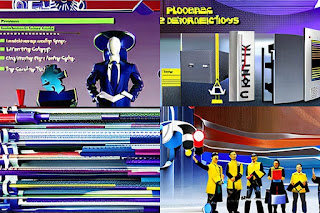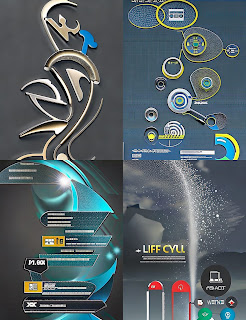Introduction: The Future of Remote Work
According to a Gallup poll, almost two-thirds of American workers say they would like to work remotely at least some of the time. The pandemic has only accelerated this trend, with an estimated 42% of the U.S. workforce working full-time from home.
The rise of remote work is transforming the workplace in profound ways. For one, it’s blurring the lines between where work ends, and life begins. It’s also creating new challenges for managers who must find ways to cultivate team cohesion in a remote environment.
Fortunately, there are proven strategies for building a cohesive remote team. In this article, we’ll share four of them:
- Define the team’s purpose and objectives.
- Encourage regular communication and collaboration.
- Promote a culture of feedback and accountability.
- Invest in tools and technology that facilitate remote work.
What is Team Cohesion?
Team cohesion is the glue that holds a team together. It's the camaraderie and trust members have for one another that any team needs to function correctly.
Many factors contribute to team cohesion, but the most important one is communication. A team can develop trust and work together effectively with clear and open communication.
There are several ways to foster team cohesion in a remote environment:
- Encourage regular check-ins: Schedule regular times for team members to check in with one another via video call or chat. This gives everyone a chance to touch base and stay up-to-date on what's going on with each other.
- Create opportunities for social interaction: Just because you're not in the same physical space doesn't mean you can't socialize with one another. Plan virtual happy hours or coffee breaks, and include time for small talk in your check-ins.
- Use technology: Many tools can help with communication and collaboration, so use them! Utilize video conferencing for meetings, set up project management software to keep everyone on track, and use group chat platforms for quick conversations.
You can create a cohesive and productive remote team by following these tips!
Benefits of Cultivating Team Cohesion in a Remote Environment
There are numerous benefits to cultivating team cohesion in a remote environment. Perhaps most importantly, it can help to improve communication and collaboration among team members. Additionally, team cohesion can build trust and camaraderie among team members, leading to improved workflows and increased productivity. Finally, cultivating team cohesion can also help create a more positive and supportive work environment, which can benefit employees and employers.
Strategies for Increasing Team Cohesion in a Remote Environment
A few key strategies can be used to increase team cohesion in a remote environment.
- First, it is vital to create opportunities for team members to interact with each other regularly. This can be done through video conferencing, chat rooms, or scheduled times when everyone can talk.
- Second, it is essential to give team members dedicated time to work on projects together. This could be done through scheduled work sessions or allocated weekly time when everyone is working on the same project.
- Third, it is helpful to create shared resources that team members can use. This could be anything from a shared document repository to a shared task management system. These resources allow team members to easily collaborate on projects and stay up-to-date on what others are working on.
- The fourth strategy for increasing team cohesion in a remote environment is encouraging social interaction outside work hours. This could be done by organizing group activities or setting up informal virtual coffee chats. By giving team members time to interact with each other in a relaxed setting, they will be more likely to build strong relationships with each other.
- The fifth strategy is ensuring that everyone feels like they are part of the team and that their contributions are valued. This can be done by giving regular feedback, recognizing good work, and involving everyone in decision-making. By making everyone feel like they are part of the team, you will foster a sense of loyalty
- Effective Communication Practices
For a remote team to function cohesively, effective communication is essential. Here are some tips for ensuring that your team communicates effectively:
- Schedule regular check-ins. Whether it's a daily stand-up or a weekly team meeting, regular check-ins allow everyone to stay up-to-date on what's going on and ask any questions they may have.
- Use video conferencing. While email and instant messaging are great for quick back-and-forths, seeing and hearing each other regarding complex discussions is the best. Video conferencing also makes it easier to build relationships with your teammates.
- Make sure everyone has a voice. In any discussion, whether in a meeting or via email, ensure that everyone can share their thoughts and ideas. This will help ensure that all voices are heard and that everyone feels like they're part of the team.
- Encourage open communication. If someone has an issue or concern, encourage them to speak up so that it can be addressed quickly and efficiently. Creating an open and inclusive environment will foster a more cohesive team overall.
- Setting Realistic Goals and Expectations
When setting goals and expectations for a remote team, it is essential to be realistic. This means considering that team members may be in different locations and may have different schedules. It is also essential to consider the different skill sets of team members and how they can best be used to achieve the desired results.
Some tips for setting realistic goals and expectations for a remote team include:
- Define what success looks like: Before setting any goals or expectations, you must clearly understand what success looks like for your team. This will help you identify what needs to be done to achieve this goal.
- Set specific and achievable goals: Once you know what success looks like, you can start setting specific achievable goals within the given timeframe. Make sure these goals are challenging but possible to reach.
- Communicate regularly: Regular communication is essential for a remote team to succeed. This includes formal communications, such as project updates, and informal communications, such as water cooler chats.
- Encourage collaboration: A remote team should feel like a cohesive unit, even though members may be located in different parts of the world. Encourage collaboration by using tools such as video conferencing and instant messaging.
- Creating a Sense of Community and Belonging
When it comes to creating a sense of community and belonging in a remote environment, there are a few key strategies that you can use to ensure success. First and foremost, creating opportunities for social interaction and connection is crucial. This can be done through regular team check-ins, virtual happy hours, or even scheduled informal chatting times.
Another essential strategy is to foster a culture of communication and transparency. This means creating an environment where team members feel comfortable sharing their thoughts and ideas openly, without fear of judgment. It’s also essential to ensure that everyone feels like they have a voice within the team and that their input is valued.
Finally, creating a sense of purpose for your team is crucial. This could be as simple as having everyone aligned on the company’s mission and goals or specific to the project or task. Whatever it is, ensuring everyone knows why they’re working together will go a long way in creating a cohesive and motivated team.
Challenges Inherent in Working Remotely
Several challenges inherent in working remotely can make it difficult to cultivate team cohesion. First, there is the issue of communication. Keeping everyone on the same page can be challenging when you're all in different physical spaces. There is also the issue of trust. Building trust with your team members can be challenging when you regularly need to see them face-to-face. Finally, there is the issue of accountability. Holding team members accountable for their work can be challenging when you cannot physically see them working.
Conclusion
Team cohesion is essential to the success of any business and especially important in a remote environment. Taking the time to focus on cultivating team cohesion by utilizing proven strategies will help ensure that everyone, individually and collectively, can work at their best. By optimizing remote communication channels, encouraging collaboration, providing training on virtual tools, and focusing on team-building activities, you can create an effective environment where teams can thrive regardless of physical distance or location.




